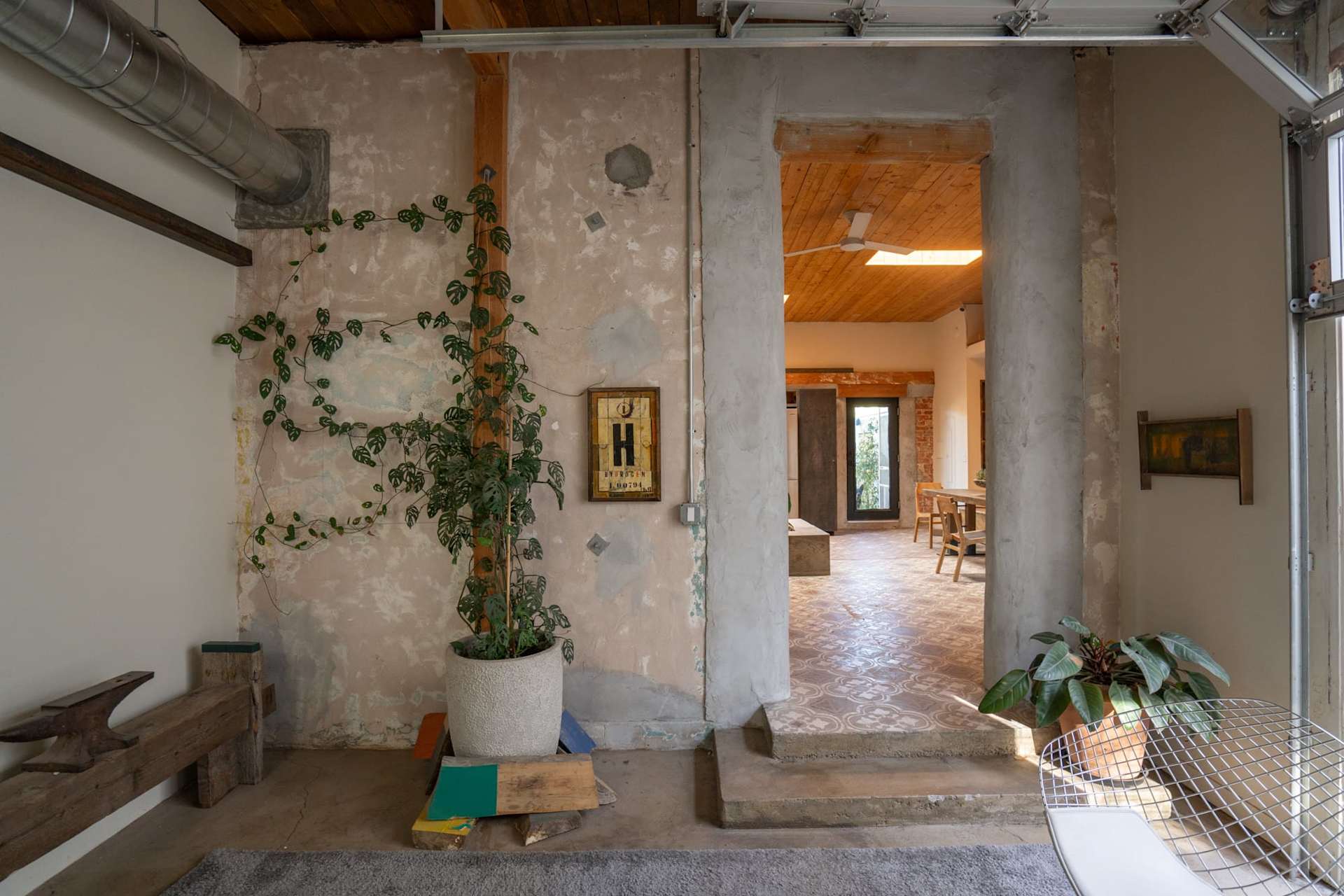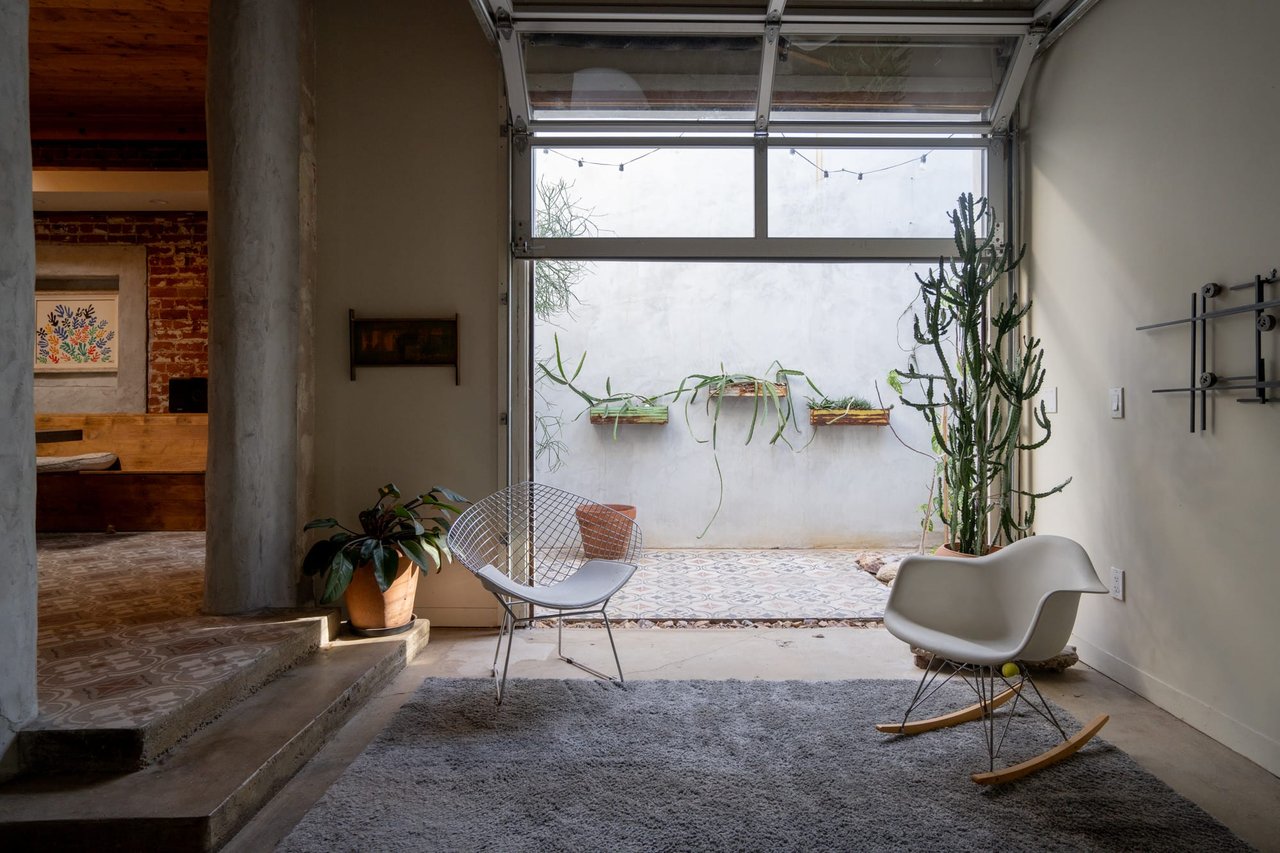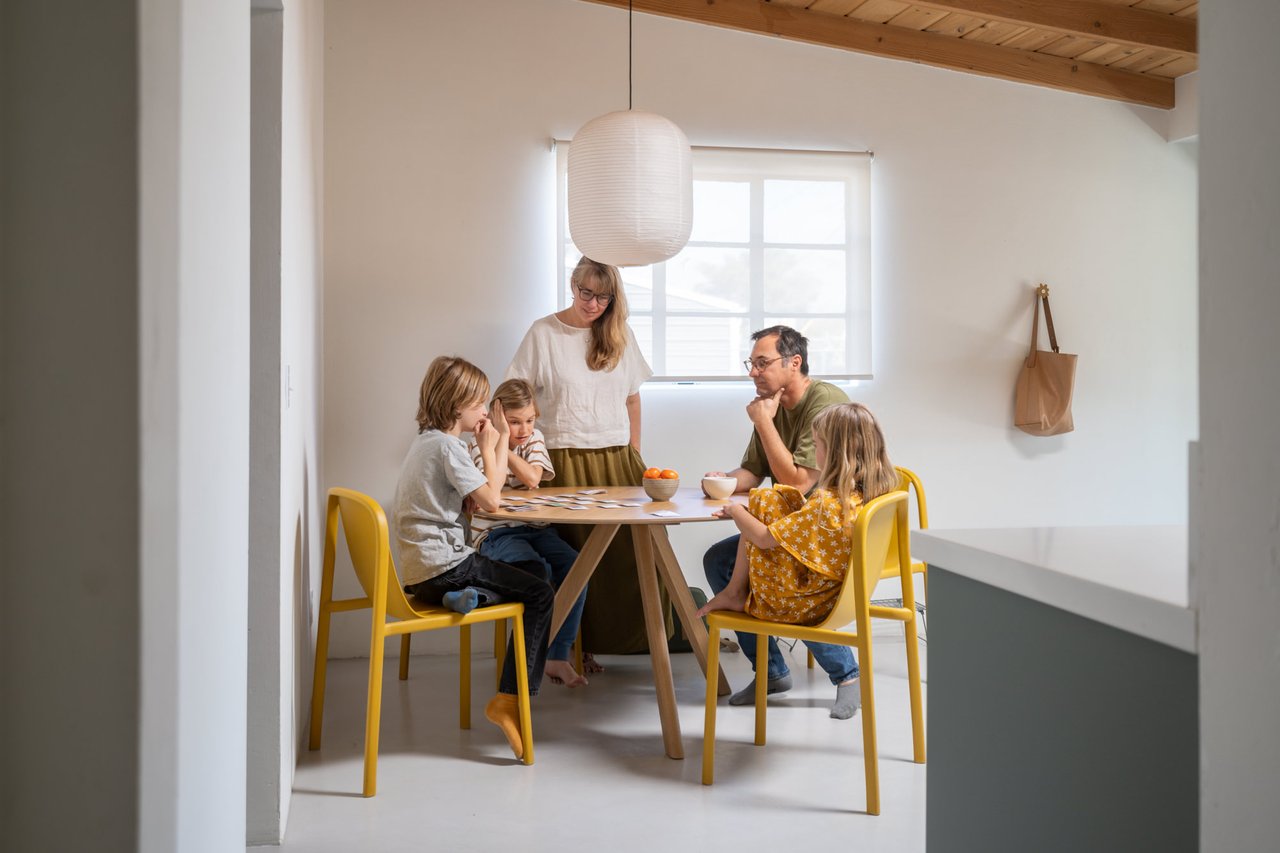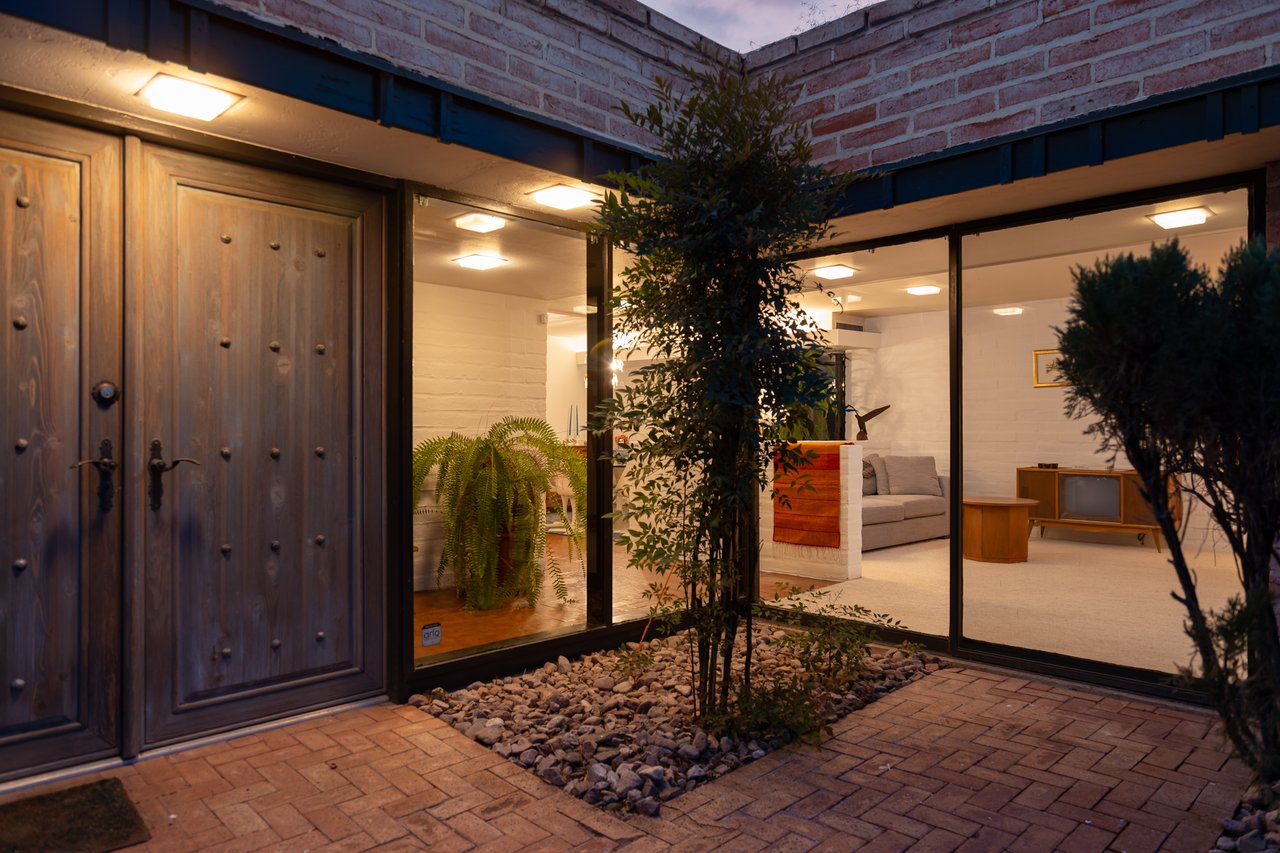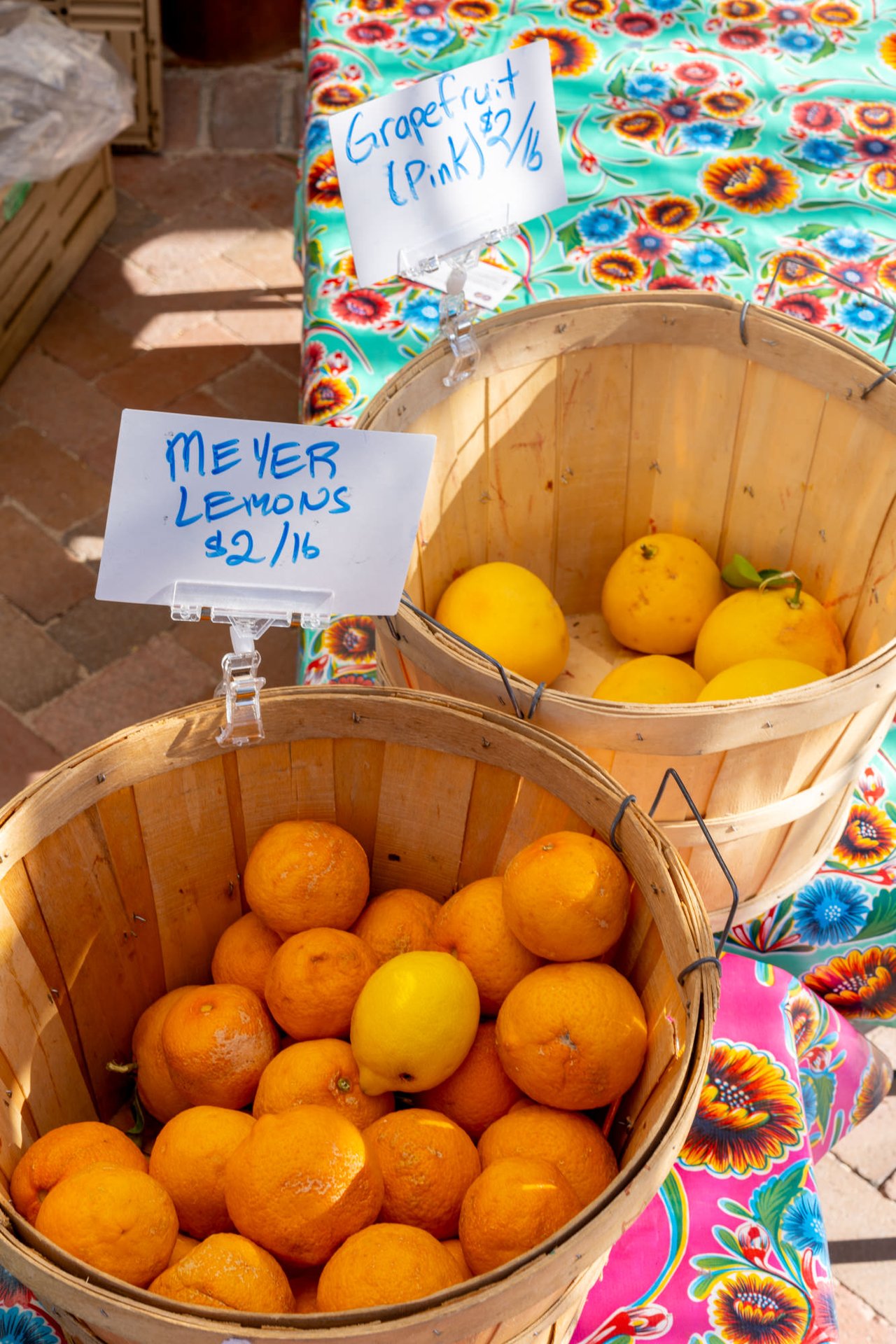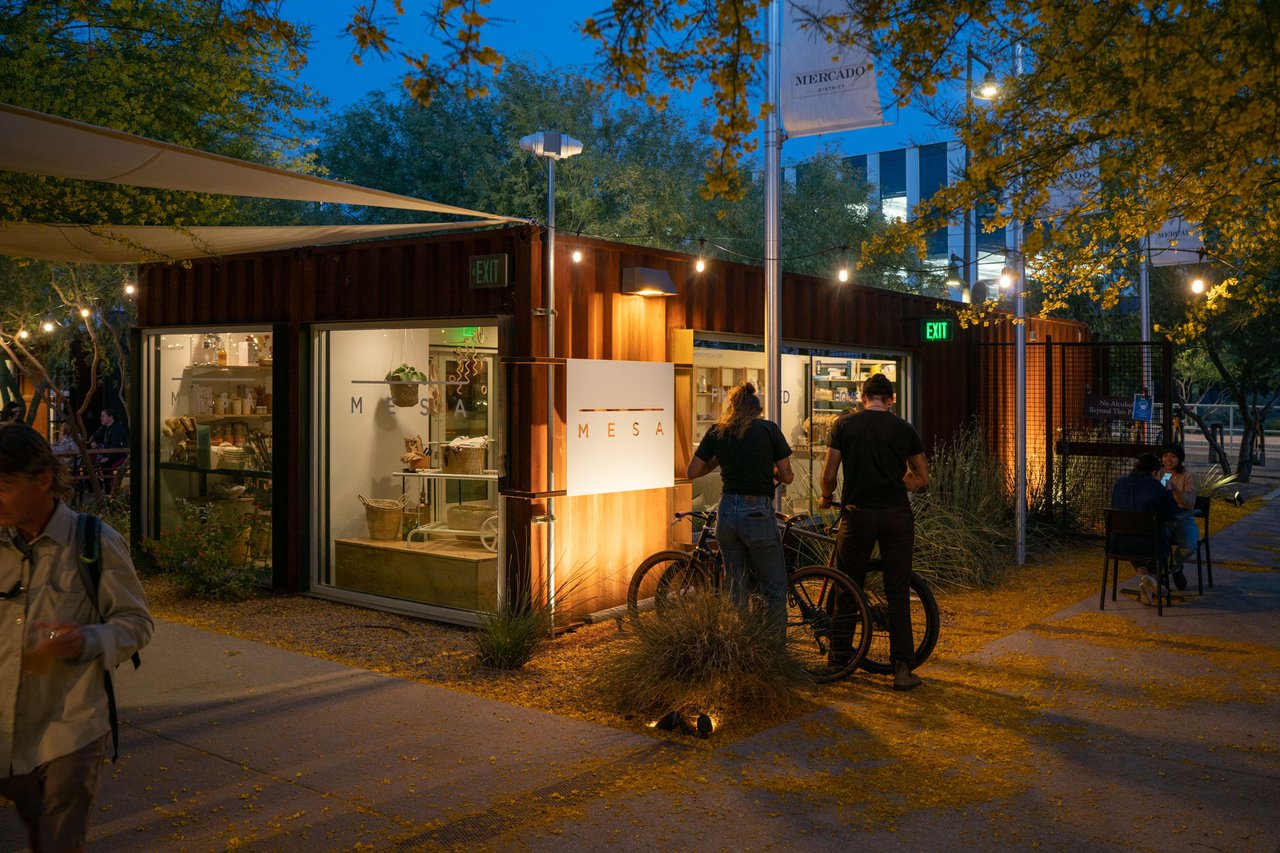Just a month ago, we stepped into the central historical building in Armory Park and was greeted by the tranquility of a central courtyard flanked by two of its main buildings. The soaring ceilings and open layout evoked the charm of a bustling urban apartment infused with the essence of Central American living, where seamless indoor-outdoor transitions are intrinsic to daily life.
What was once a Bakery had long been neglected until Jeff and Nissa took the reins, embarking on a meticulous renovation journey spanning six years. With a keen eye for design and functionality, Jeff, an experienced engineer, and Nissa, a visionary in livability, breathed new life into this historic property.
Their expertise shone through as they navigated the complexities of restoration, carefully preserving the building's heritage while infusing it with modern amenities. From updating electrical and plumbing systems to revamping HVAC and sewer infrastructure, no detail was overlooked in the quest to revive this architectural gem.
Much of the original structure had been ravaged by fire, presenting a unique set of challenges. Yet, with unwavering dedication, Jeff and Nissa embarked on the arduous task of rebuilding and reimagining the space. Their vision encompassed a versatile environment conducive to live/work arrangements, generational living, communal spaces, or a return to multiple apartments.
The result is a harmonious blend of old-world charm and contemporary comfort—a space that honors its past while embracing the demands of modern living. Pima Bakery stands as a testament to the transformative power of restoration and the enduring allure of historic architecture.
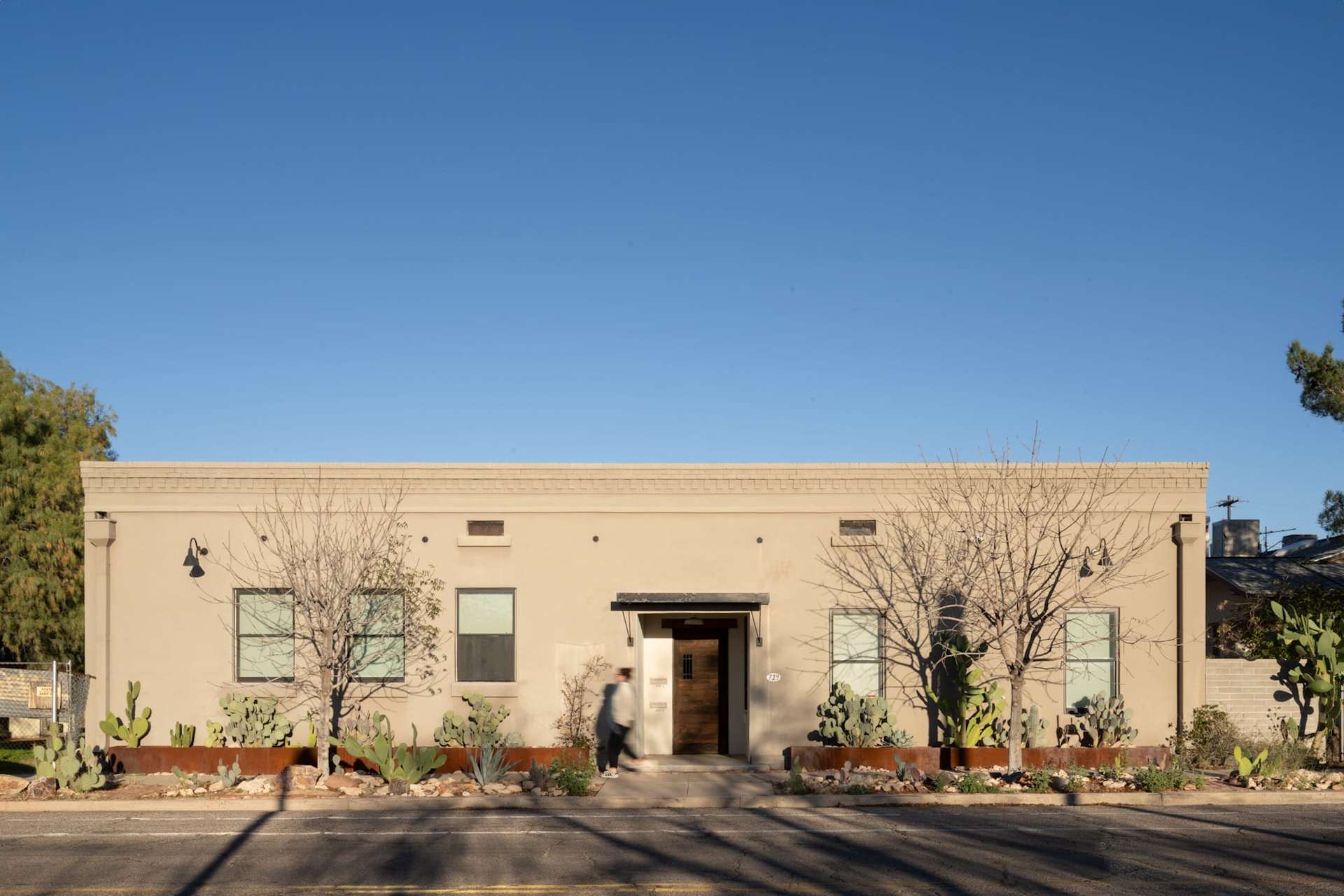
illuminated exterior
The history of the building
J: When I purchased the building, it had sat for over 15 years, and at the time of the purchase it was boarded up after extensive fire damage. Originally the building was part of a larger compound and served as the Pima Bakery which was owned by the Middleton family in the 1930s.
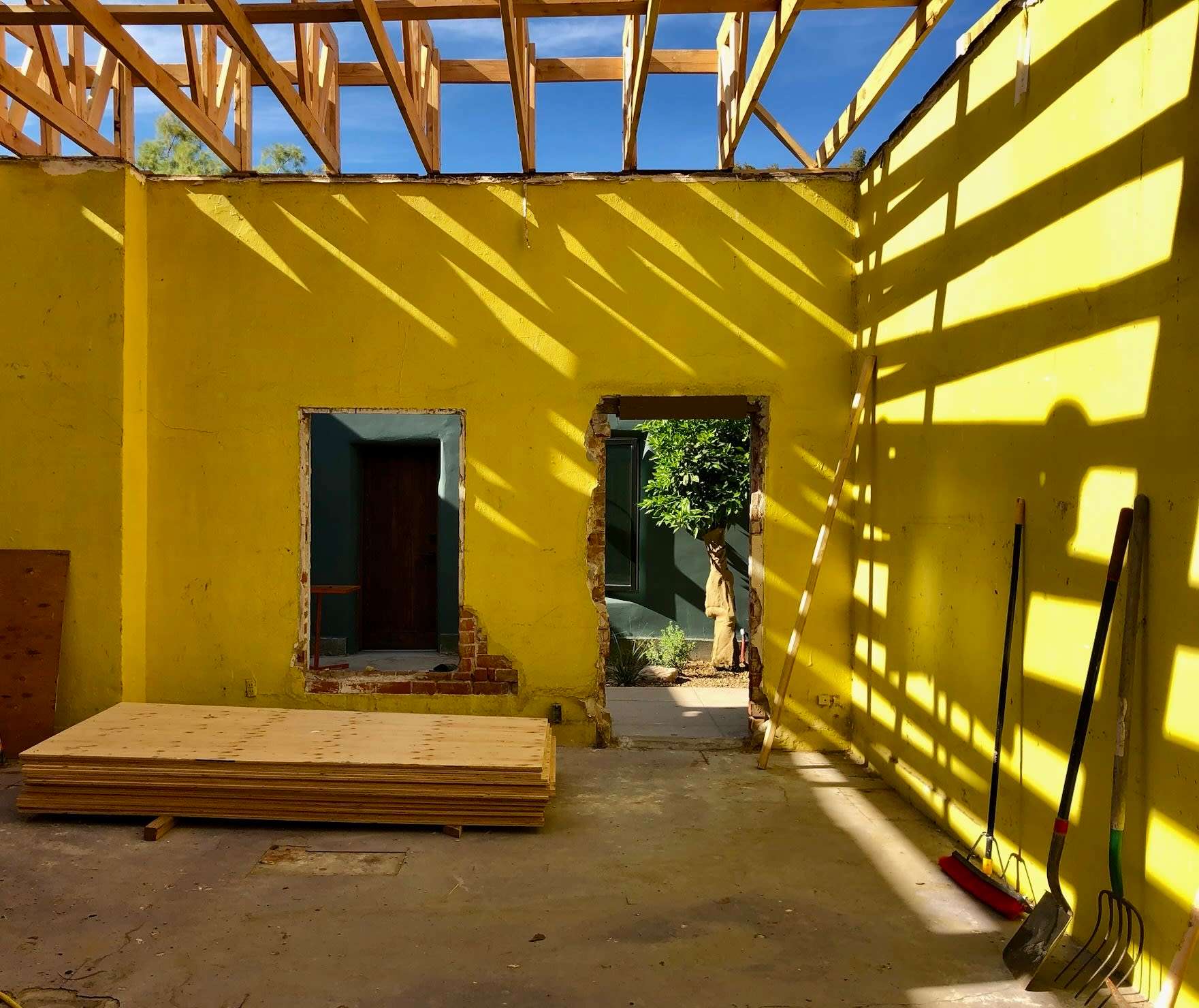
process photos from the renovation
What were some of the major renovations that were done?
J: As an experienced builder and designer, I recognized the potential of this property. The project involved a comprehensive overhaul, including stucco work, framing, electrical rewiring, plumbing updates, and roofing repairs. Notably, extensive underground electrical installations and the construction of new trusses posed significant challenges.
I utilized a portion of the building as my woodworking studio, where I crafted furniture, doors, and lighting fixtures. Drawing on my expertise, I infused the space with a blend of functionality and aesthetics, leveraging over 20 years of experience in the industry.
Some fun facts to understand the extensive work that was done. The concrete floor required the removal of 3152 pounds of paint, and demolition generated debris equivalent to 35 dumpsters, excluding dirt and concrete. Additionally, 6 tons of scrap metal were extracted from the building.
I utilized a portion of the building as my woodworking studio, where I crafted furniture, doors, and lighting fixtures. Drawing on my expertise, I infused the space with a blend of functionality and aesthetics, leveraging over 20 years of experience in the industry.
Some fun facts to understand the extensive work that was done. The concrete floor required the removal of 3152 pounds of paint, and demolition generated debris equivalent to 35 dumpsters, excluding dirt and concrete. Additionally, 6 tons of scrap metal were extracted from the building.
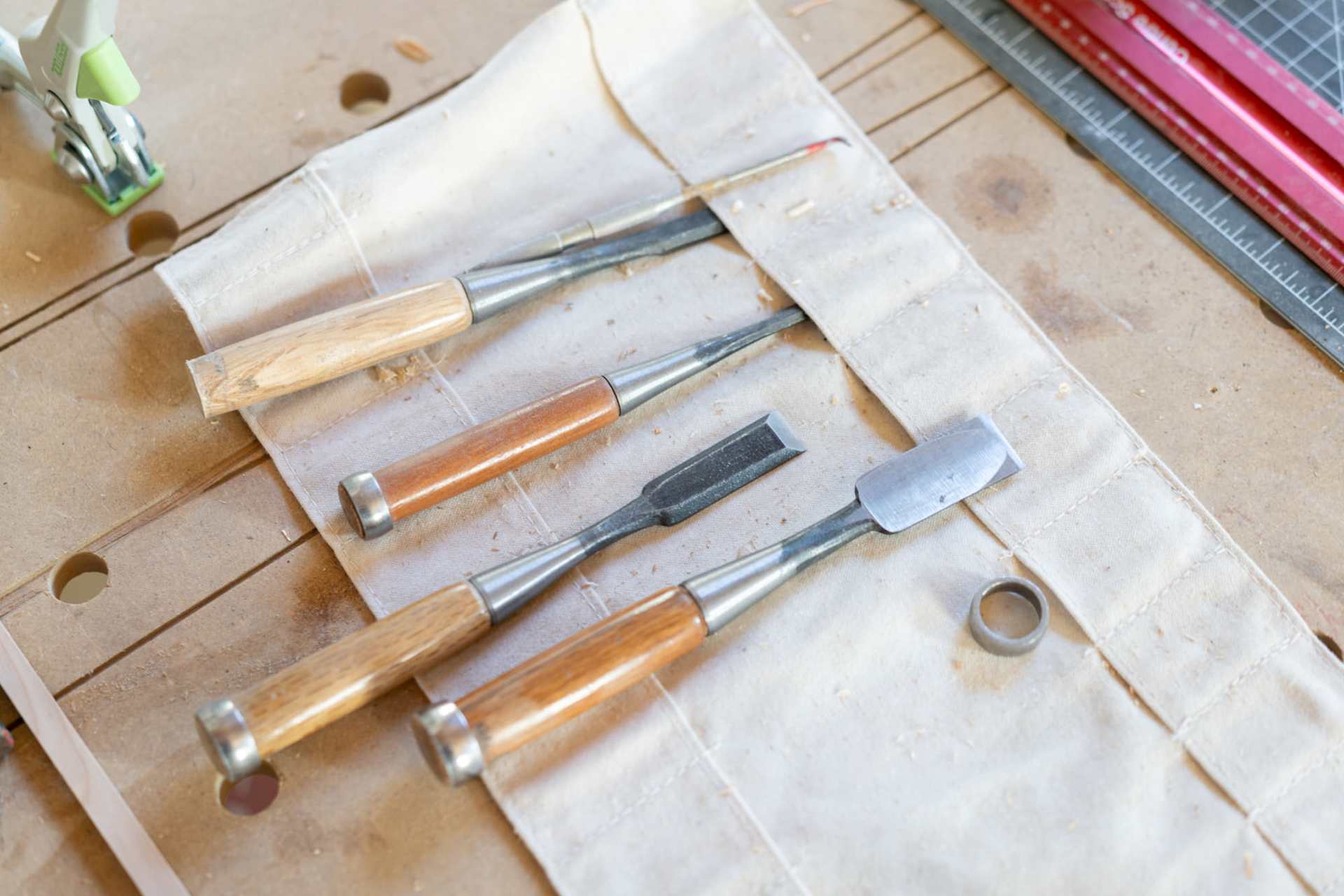
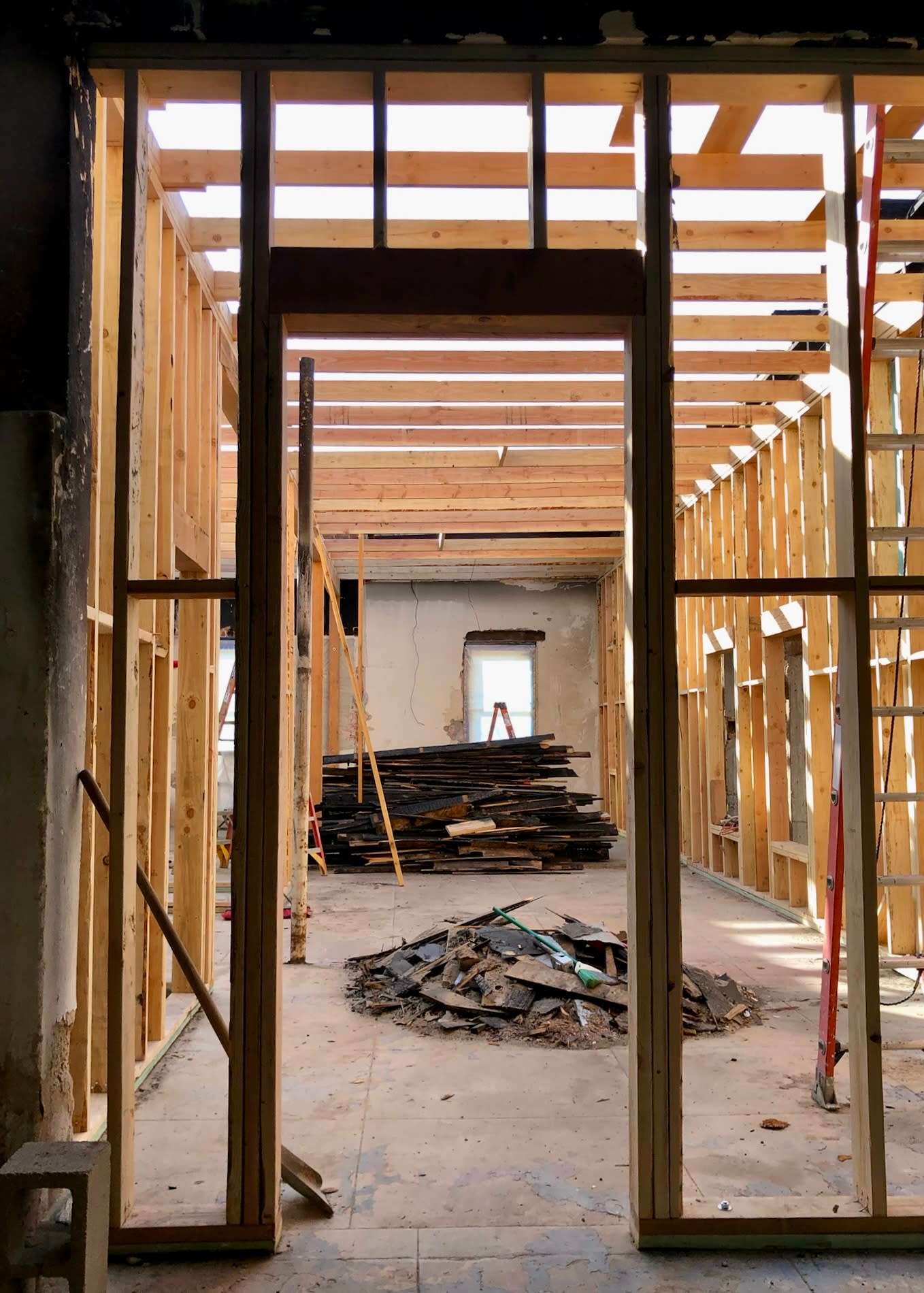
exposing the bones of the space
What do you love about this property?
N: The courtyard has to be my favorite part of the building, I’m always out there. The warm mornings and in the evenings, eating alfresco, it’s the best. The sunsets and sunrises in Arizona are particularly stunning. Watching the light shift in the courtyard is absolutely phenomenal, reminds me a little bit of a Turrell, extremely peaceful and it just feels so nice. The natural water sound from the fountain are calming. The changes of season although fairly subtle is lovely to watch, the blooms and bright green new growth in the spring is fantastic. The push pistachio trees in the front yard give the red, yellow show in the fall-winter before dropping the leaves in the late winter.
When indoors the historic double brick building has a great sense of past and present. There are new and old materials creatively mingling. The high ceilings give an excellent sense of scale. Every function has been updated, electric, plumbing, HVAC, sewer, windows, and the roof yet you still get a sense of history. The brick, stucco, and cement floors have that wonderful patina of time. Every room has custom touches with artisanal choices. The structure itself has a feeling of artfulness, to be viewed and appreciated, like a sculpture.
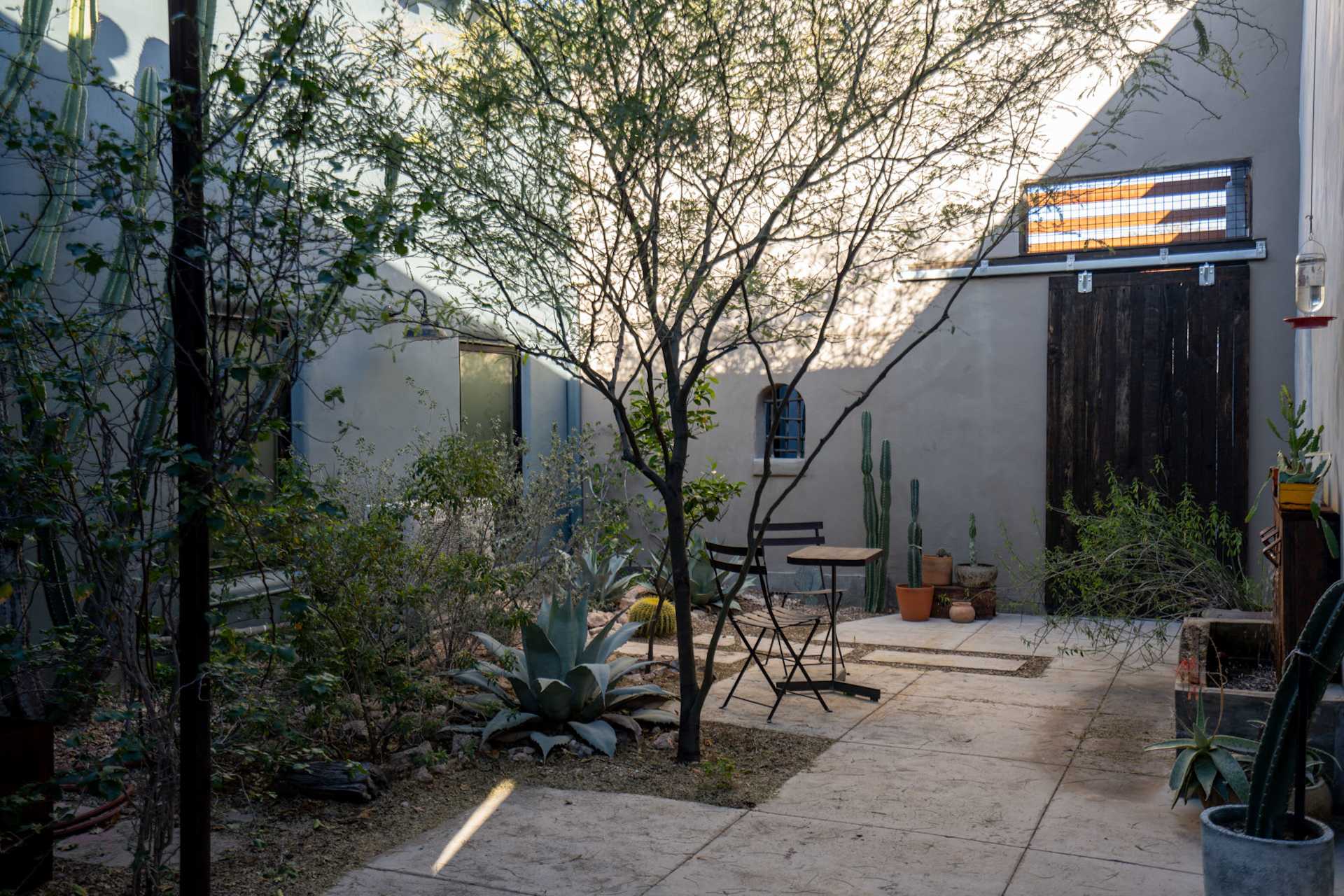
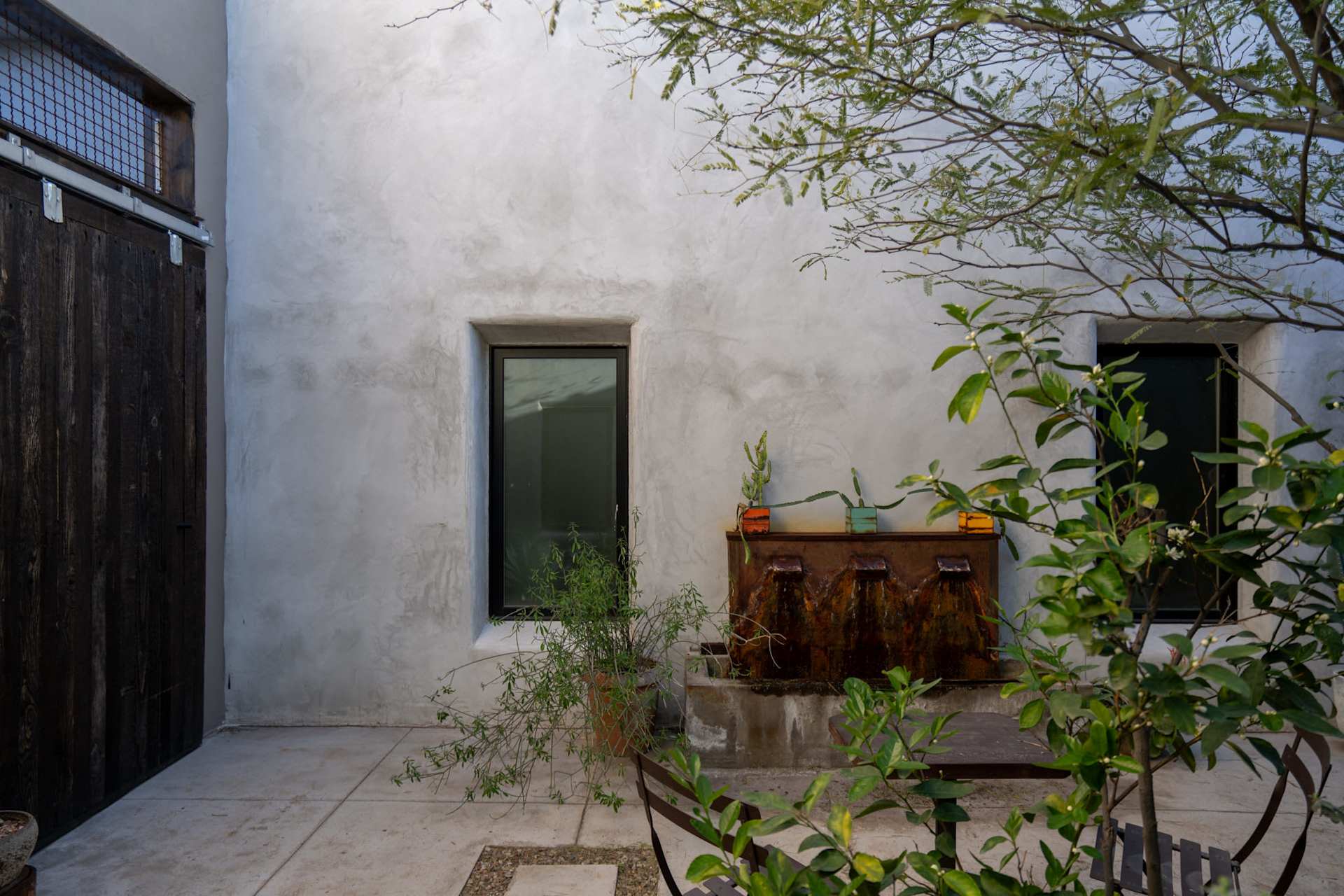
courtyards
What were your thoughts when envisioning the outdoor spaces?
N: The outdoor plantings offer mainly heritage arid species such as mesquites, agave, creosote, and cacti. In addition to these, arid plants interwoven within the yard are edible plants that also thrive in the heat. There are 6 types of citrus - Meyer lemon, lime tree, blanco oro grapefruit, blood orange, navel orange, and valencia orange. There is a passion fruit vine, a native varietal Quince tree, and two types of pomegranate. One is a native varietal of white pomegranate and the other is a traditional red varietal. A yard with culinary offerings while in the desert is a joy, the fruit is also a sweet gift for friends and neighbors.
When selecting these plants and landscaping the property it was important to show the entire range of bougainvillea colors. I went to every nursery in the area to make sure we would have all colors represented, a few favorites are on repeat.
I’m also a big fan of the 2 water collection systems in the yard. We do get generous monsoon activity, and it’s great to store this water to use at a later date. We are lucky Tucson promotes this as an option, not all cities are as progressive.
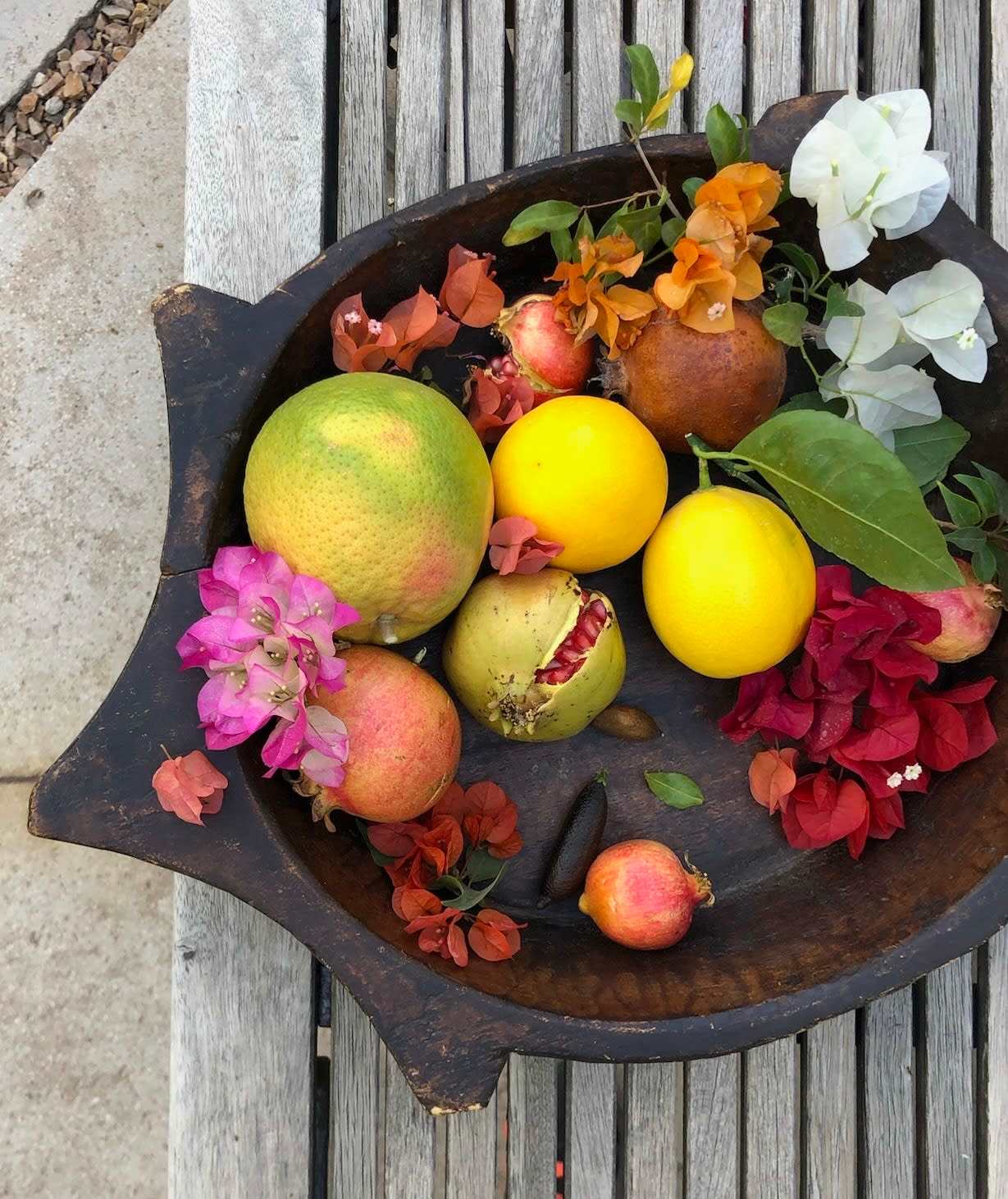

vibrant colors, smells, and textures of the gardens
What was your vision when you purchased the building?
J: Initially envisioned as a coffee house and bakery, the project evolved to accommodate a residential space with 2-3 long-term rentals and/or Airbnb units. Each area features ample room for shops, offices, or creative endeavors.
Ultimately, this restoration project exemplifies the potential for repurposing historic properties and creating vibrant, multi-functional spaces. Through meticulous planning and execution, we transformed a neglected building into a valuable asset, preserving its heritage while meeting modern needs.
